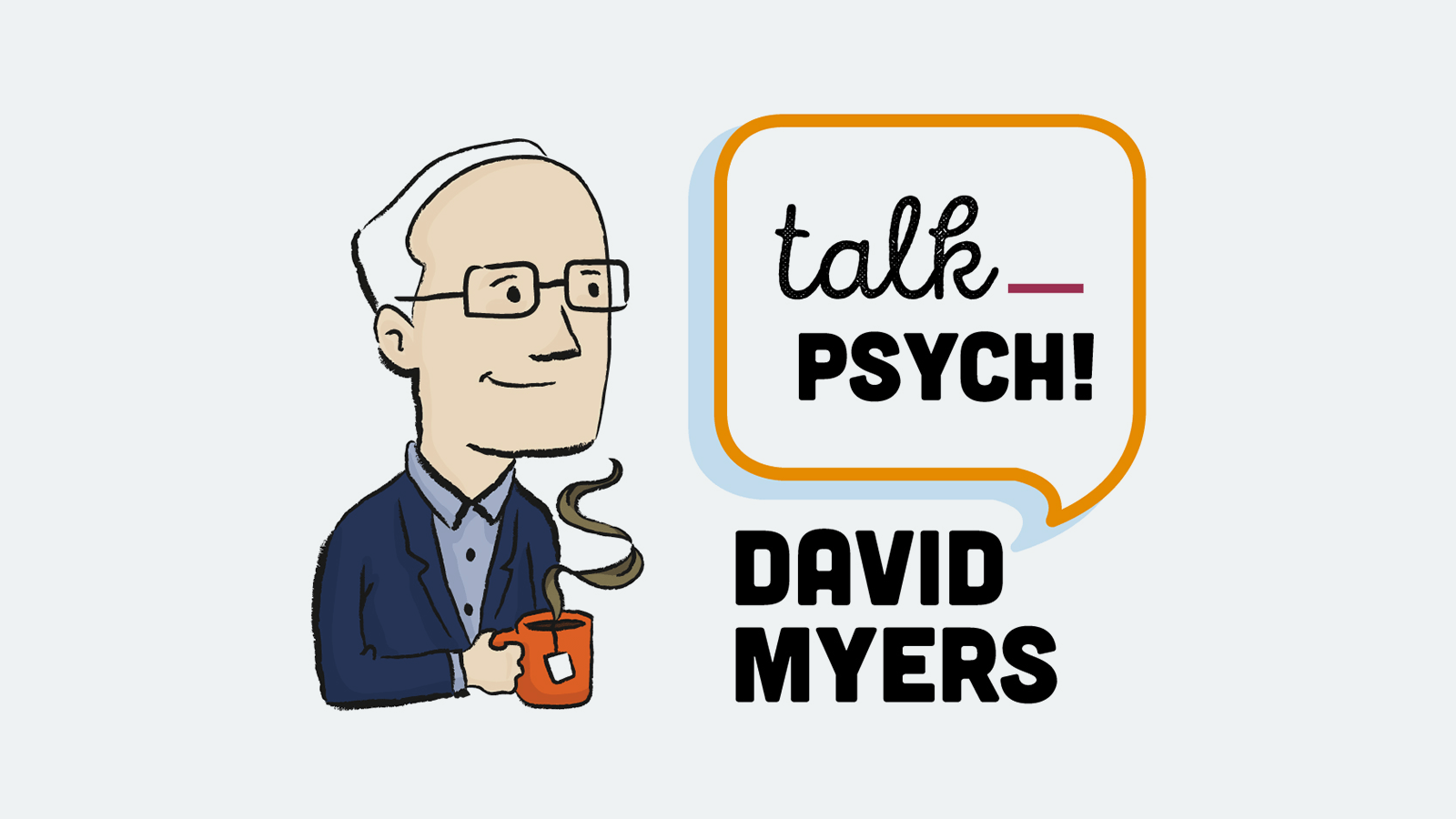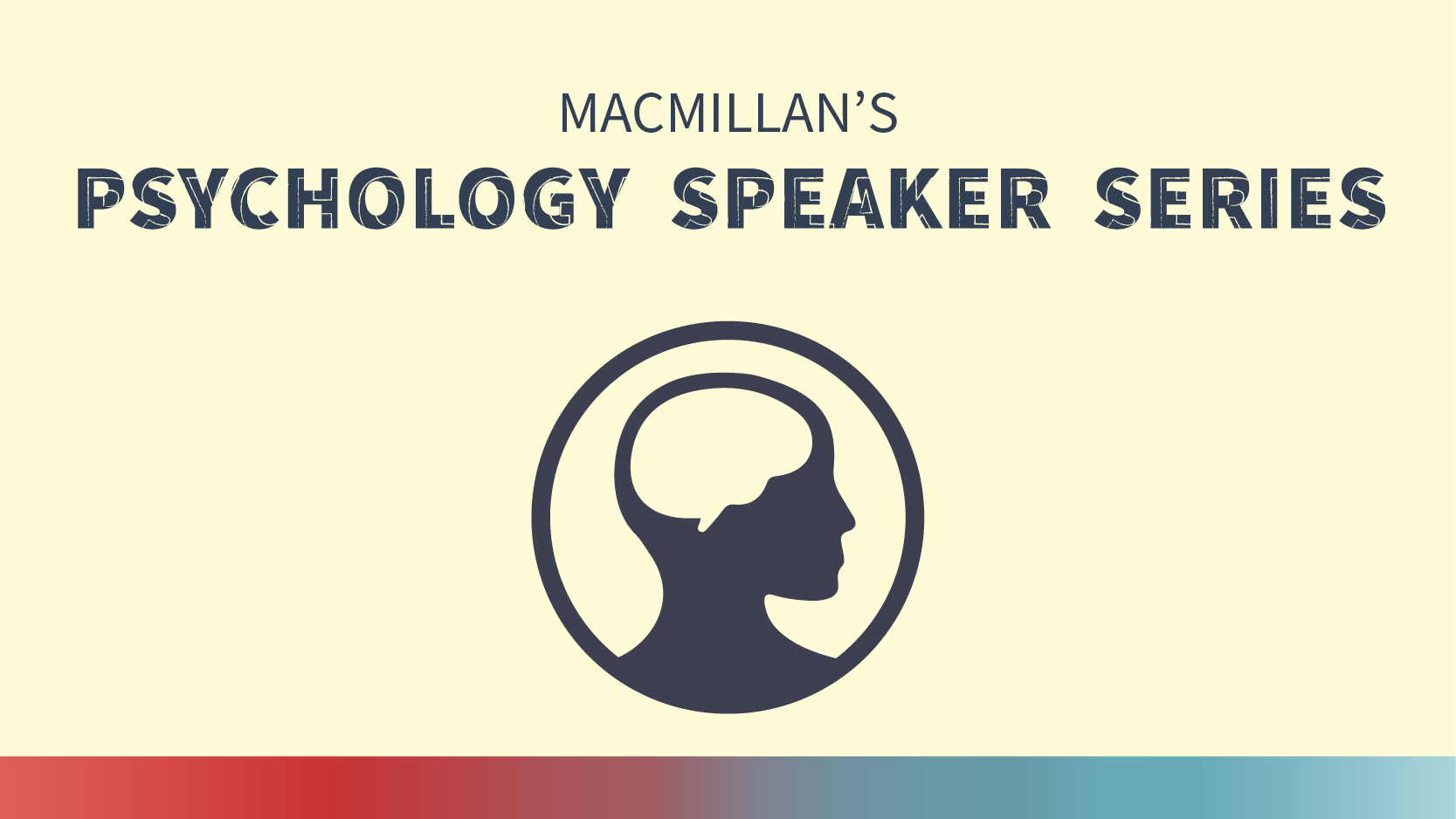-
About
Our Story
back- Our Mission
- Our Leadershio
- Accessibility
- Careers
- Diversity, Equity, Inclusion
- Learning Science
- Sustainability
Our Solutions
back
-
Community
Community
back- Newsroom
- Webinars on Demand
- Digital Community
- The Institute at Macmillan Learning
- English Community
- Psychology Community
- History Community
- Communication Community
- College Success Community
- Economics Community
- Institutional Solutions Community
- Nutrition Community
- Lab Solutions Community
- STEM Community
- Newsroom
- Macmillan Community
- :
- Psychology Community
- :
- Psychology Blog
Psychology Blog
Options
- Mark all as New
- Mark all as Read
- Float this item to the top
- Subscribe
- Bookmark
- Subscribe to RSS Feed
Psychology Blog
Showing articles with label Virtual Learning.
Show all articles
Macmillan Employee
05-13-2025
08:27 AM
Just in time for finals, students joined renowned psychologist and author David G. Myers for a live virtual study hall hosted by Macmillan Learning. Dr. Myers shared research-backed tips on how to study effectively for psychology courses and answered student-submitted questions in a lively, engaging Q&A.
If you missed it—or want a refresher—you can now watch the full recording here: https://youtu.be/GghkvjEqVlc
For more insights from Dr. Myers, check out his Talk Psych blog.
... View more
Labels
-
Teaching and Learning Best Practices
-
Virtual Learning
0
0
798
Macmillan Employee
01-19-2022
11:56 AM
Students should not only be taught the core concepts of introductory psychology, but also how those ideas play out in their daily lives and the world around them. In a seven-part video series produced exclusively for Macmillan Learning, Garth Neufeld shows how APA’s Introductory Psychology Initiative (IPI) offers a guided structure for doing just that.
As Professor Neufeld (Cascadia College) explains, APA’s IPI’s themes help students understand the trends and patterns of human thoughts and behaviors, which are concepts they can then apply to their current and future studies, and to their lives beyond the classroom. Furthermore, APA IPI themes allow instructors to organize course goals, learning, and assessments around these key topics.
Watch the full series with a community account.
... View more
Labels
-
Neuroscience
-
Teaching and Learning Best Practices
-
Virtual Learning
0
0
12.3K
Macmillan Employee
06-17-2021
08:34 AM
Do your students know what makes them happy? They probably think they do, and much what they think is probably wrong. Professor Gilbert will discuss the science of happiness, and tell you about some findings that will surprise your students – and maybe you as well!
WATCH RECORDING
... View more
Labels
-
Current Events
-
Emotion
-
Teaching and Learning Best Practices
-
Virtual Learning
0
0
8,621
Macmillan Employee
03-08-2021
12:04 PM
Research in social psychology reveals a myriad of ways that implicit biases contribute to group disparities, but teaching students about these biases can be challenging. Professor Schmader will discuss a variety of class exercises that can be used, not just to teach students about the science of implicit bias, but also to help them apply this knowledge in a way that will help them foster greater inclusion in their social world.
WATCH THE RECORDING
... View more
Labels
-
Social Psychology
-
Virtual Learning
0
0
9,914
Macmillan Employee
01-05-2021
08:06 AM
Dr. Kelly Goedert and Dr. Susan Nolan will describe how the use of statistics in psychological science is changing as the field undergoes an open-science revolution. They will highlight ways to update your undergraduate statistics course that center on an ethical approach to analyzing, interpreting, and reporting data, and will offer engaging examples and activities you can use in your classroom.
WATCH THE RECORDING
... View more
Labels
-
Research Methods and Statistics
-
Teaching and Learning Best Practices
-
Virtual Learning
0
1
11.7K
Macmillan Employee
11-11-2020
01:58 PM
What better tour guide through My Psychology than the author himself, Andy Pomerantz. In each of these brief videos Andy introduces a specific chapter, highlighting important topics to come while addressing student preconceptions. Using these is a terrific way to set the stage for your lectures and your students' encounters with the course material.
Preview the Lecture Launchers by Chapter:
Chapter 1: The Science of Psychology
Chapter 2: Brain and Behavior
Chapter 3: Sensation and Perception
Chapter 4: Consciousness
Chapter 5: Memory
Chapter 6: Learning
Chapter 7: Cognition: Thinking, Language and Intelligence
Chapter 8: Motivation and Emotion
Chapter 9: Development Across the Lifespan
Chapter 10: Diversity in Psychology: Multiculturalism, Gender, and Sexuality
Chapter 11: Stress and Health
Chapter 12: Personality
Chapter 13: Social Psychology
Chapter 14: Psychological Disorders
Chapter 15: Therapy
... View more
Labels
-
Teaching and Learning Best Practices
-
Virtual Learning
0
0
3,247
Macmillan Employee
11-09-2020
06:14 AM
What does it mean to be WEIRD—that is, raised in a society that is Western, Educated, Industrialized, Rich, and Democratic? Unlike much of the world today, and most people who have ever lived, WEIRD people are highly individualistic, self-obsessed, control-oriented, nonconformist, and analytical. They focus on themselves—their attributes, accomplishments, and aspirations—over their relationships and social roles.
How did WEIRD populations become so psychologically distinct? What role did these psychological differences play in the industrial revolution and the global expansion of Europe during the last few centuries? Those questions are at the heart of the fascinating webinar session with Dr. Joseph Henrich, author of The Weirdest People in the World: How the West Became Psychologically Peculiar and Particularly Prosperous.
ACCESS THE RECORDING TODAY!
... View more
Labels
-
Virtual Learning
0
0
2,741
Topics
-
Abnormal Psychology
5 -
Achievement
2 -
Affiliation
1 -
Cognition
9 -
Consciousness
13 -
Current Events
6 -
Development Psychology
9 -
Developmental Psychology
12 -
Drugs
4 -
Emotion
19 -
Evolution
1 -
Gender
4 -
Gender and Sexuality
3 -
Genetics
2 -
History and System of Psychology
4 -
History and Systems of Psychology
2 -
Industrial and Organizational Psychology
15 -
Intelligence
1 -
Learning
26 -
Memory
10 -
Motivation
4 -
Motivation: Hunger
1 -
Nature-Nurture
2 -
Neuroscience
15 -
Personality
11 -
Psychological Disorders and Their Treatment
9 -
Research Methods and Statistics
41 -
Sensation and Perception
15 -
Social Psychology
45 -
Stress and Health
5 -
Teaching and Learning Best Practices
30 -
Thinking and Language
9 -
Virtual Learning
7
- « Previous
- Next »
Popular Posts








